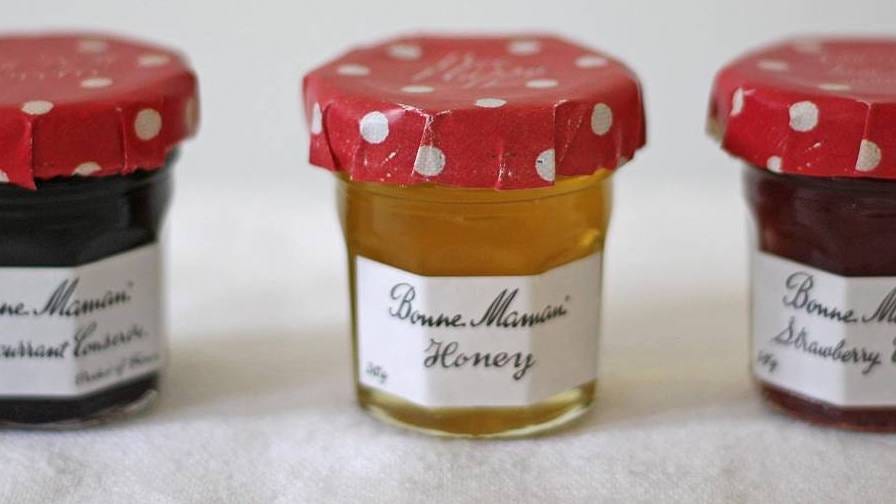He approaches her, focused, but tentative. She is yet to be convinced, but he is intent on winning her favor. He brings to her a nuptial gift, a delicious nugget wrapped in beautiful silk. It has both nutritional and aesthetic value—and the silk carries on it sensory messages that she is meant to find highly compelling1. If she approves of his gift, she will likely approve of him. The perfectly chosen gift can open many doors.
A frog builds a nest in the mud for his intended, a place that will stay wet for his eggs and tadpoles when the rains don’t come, but will be resistant to floods when the water comes too fast. Such a gift, simple as it may seem, is in high demand. These gladiator frogs, so named for the impressive spines on their wrists, fight territorial interlopers. They can be fierce and savage. When a female gladiator frog approves the nest that the male has built—when she accepts his gift—there is therefore the implicit promise of something more to come. The gift is not just the thing, but the defense of the thing as well. In the future, should it come to it, he will defend what he built and has given to her. In so doing, he will make it more likely that their offspring will survive long enough to metamorphose, long enough to play this same game with others2.
Octopi live fast and die young. It might seem that there is, in such a lifestyle, little opportunity for giving gifts. But the females are usually semelparous—breeding just once before dying, a trait also found in salmon, cicadas and sunflowers—and what better gift to give your developing brood than everything you have? The new mother protects her eggs from predators, and cleans and oxygenates them, all of which takes strength, which she borrows from herself. She stops eating, and may lose more than half her body weight, focusing her attention and resources on her young. On rare occasions, she may survive beyond her brood hatching; a few species of octopus do this regularly. But for many female octopi, the hatching of their eggs means that death will come soon3.
A crow sweeps down to a ledge that has been lovingly stocked with peanuts by a young girl4. This crow does not approach with particular caution, as his uninitiated compatriots would. He knows this girl, has come to trust her. Before picking up a peanut in his jet-black beak, he gently deposits a gift for his benefactor: a small piece of glass, a lost earring, a colorful scrap of cloth, or even a dead bird. (Some gifts may have rather different effects than the giver intends.) The items are small, but took time and effort to collect, and forethought5.
Gifts are exchanges between individuals. Gifts may come unannounced, or unexpected, and these can be the most wonderful surprises. But it is more common that gifting is done in certain places at certain times. There are traditions, that is, with rules that are understood by all.
Across human cultures, gift giving seems to be universal.6 What constitutes a gift will vary among cultures, and many moderns without an evolutionary background may bristle at the framing here, but reciprocity, either direct or indirect, simultaneous or delayed, can be understood as a form of gift, sensu lato. All human cultures have some form of reciprocal exchange—in labor, goods or services. And all human cultures have some form of gift giving, sensu stricto, as well7.
Among the !Kung San, a hunter-gatherer people of Africa’s Kalahari desert, material possessions are few. The small bands of 10 – 30 people frequently move camp, taking with them everything they own. Permanent objects are owned by individuals, rather than by a collective, yet most such objects are gifted frequently enough that they become part of a network of goods, in which who gave what to whom when is carefully monitored by all involved8. You may pass along the ostrich shell jewelry that I gave you yesterday before the week is out, but unlike the ever-maligned Christmas fruitcake in some American households, rapid regifting is expected among the San. Thus there are delayed, reciprocal obligations between people, which helps to ensure good relations, frequent travel between the members of a far-flung network, and cooperation during times of hardship9. This gift-giving network functions to spread risk more evenly across the population, and is so integral to the !Kung economy that it has a special name, hxaro.
In Iran, gift giving is also a ubiquitous and necessary part of life, but there are two distinct kinds of gifting. Between intimates, gifts tend to be of time, favors, or handmade goods, and reflect the personality of the individuals involved. Less familiar to Westerners will be the Iranian system of formal gift-giving—a public exchange between associates, in comparison to the private exchange between intimates—which is a process with clear rules. Different occasions warrant particular gifts, for instance. Pastries are appropriate in some situations, but givers can distinguish themselves subtly by choosing which pastry shop to buy from. The recipient, in turn, may regift the pastries—providing they do so before the pastries become stale—without any insult to the original giver. Such formal gifts are rarely personal, and the value of the gift is expected to reflect the difference in rank between giver and gifted. Furthermore, formal gifts are neither wrapped, nor opened in front of guests, and indeed are rarely commented on at all. They act as a kind of social currency, and are necessary, but it would be rude to focus on them10.
Gifting becomes most public and grandiose at the scale of nations. The Statue of Liberty was famously given to the United States as a marker of friendship and alliance by the people of France. Twenty thousand tulip bulbs are sent from the Netherlands each year to Canada, in gratitude for Canada having sheltered members of the Dutch Royal family during World War II. And in a somewhat more explicit quid pro quo, Costa Rica’s Estadio Nacional (National Stadium) was paid for and constructed by the Chinese, shortly after which Costa Rica severed economic ties with Taiwan, and signed a free trade agreement with China.
Gifting, at its most basic, is an investment. It is the sacrificing of alternative opportunities for the purpose of cultivating relationship. Gifting constitutes a true sacrifice that binds our fate to that of the recipients of our gifts. It can be uni-directional, as in a dowry or bride price in which a family becomes heavily invested in the success of a marriage. Or it can be bi-directional, an exchange in which two individuals re-dedicate and reinforce a bond through the mutual sacrifice of time, material, or money.
A gift can be entirely symbolic, an exchange based in no way on need, but rather on shared cultural touchpoints. A gift can be reassurance, therefore, that we are of the same tribe. Recall Paul Poitier, Will Smith’s character in Six Degrees of Separation, from the play of the same name. Paul is a street hustler who is trying to propel himself into the upper echelons of society by dint of careful observation, study, and charm. One young man who was born and bred to wealth reveals to Paul that “when rich people do something nice for you, you give them a pot of jam.”
“That’s what pots of jam is for?” says Paul. Now that he knows, he can play in the gift economy of the rich, and so have some hope of passing for one of them.
Below all the nuance and cultural variation in the details of gift giving is a bedrock foundation. Every investment in another individual eliminates alternative opportunities and sends us deeper into shared fate. If I fail you, I lose all that I have invested. There is a clear cost, and a clear benefit.
A gift must have some value to count for anything. What counts as value will of course be variable—between cultures, between species, between particular situations. Sometimes, however, a gift is patently not what it seems.
What happens to that spider who offers a silk-wrapped gift…if it turns out to be empty inside?11 What about the young man who offers his beloved a diamond engagement ring…only to have it be revealed as cubic zirconia? Or consider this: what if the diamond ring that he gives her is real, but he purchased it at a pawn shop for a fraction of its assessed value? It has the same absolute value, in terms of how much she could sell it for, but he spent less than market value. Does that make the gift less valuable in her eyes? Or, conversely, does it raise him in her estimation, as he has proven that he knows how to extract value from a system that is demonstrably difficult to navigate? How she feels about him having sourced a ring this way will predict a lot about whether the relationship has a chance of flourishing. Those who gift falsely do not easily regain the trust or affection of those who have been so duped.
It is also true that those who gift prodigiously, when it is not called for, or when it is out of step or scale with cultural norms, may have their motives called in to question. If a single ruby will make an elegant and lasting point, a whole pile of them might throw the whole relationship into chaos.
Historically, the value of a gift was easier to evaluate. The sources of wealth were fewer and easier to track, the acquisition of material was harder to outsource, as was time spent. Time being zero-sum—there are only so many hours in a day—any time spent by a giver creating or procuring a gift was therefore in direct competition with the business of daily survival. A gift, therefore, was a sacrifice at some level. All told, it was fairly easy to evaluate the value of a gift relative to the wealth of the individual, the rarity of the material compared to the local environment, and the amount of time invested.
Today’s landscape is more ambiguous. Wealth and its indicators are myriad, and often difficult to evaluate or track. Gifting is weakened by the ubiquity of mass-produced indicators of wealth. And time is easily outsourced to the less powerful. All of this has allowed markets to provide material goods with the trappings of high value, but at low actual cost to the gift giver. We are biased, all of us, conscious or not, towards finding the most bang for our buck, towards giving something that is of higher value than what we ourselves had to spend for it. But because the recipients of our gifts live in the very same world, with the same ever-present marketplace, they have access to the same sales and discounts as we do. And so an arms race begins, in which quantity replaces quality. The demand for greater volumes of material goes up as the value of the material goes down (and the global nature of these mass consumer goods facilitates the transfer of resources from impoverished nations to wealthy ones). All of this makes more remote our ability to honestly evaluate a gift, and decouples gifting from anything of true value or sacrifice. We are thus undermining an ancient source of bonding and social cohesion.
Consider the enduring trope of the busy man having his secretary choose gifts for his wife and children. The distaste we feel for it has to do with the recognition that a gifting tradition has been gamed, reduced to its barest bones—today I gave you a thing—and in so doing has lost symbolism and meaning, while also weakening both the spousal and parent-child relationships.
Markets have captured us by offering us junk that looks like treasure. This junk appeals to our ancient bias to give the most we can while sacrificing the least. And no matter how much outrage the receiver may have over having been given more mass-produced things of no value, many of us demand more. We want more and more and more. And so the markets win.
Gifts, therefore, that indicate true attention to the other—a knowledge of what drives them, what skills and interests they have, what they are thinking about—are more likely to be well received than are generic gifts. Unlike in Iran, the WEIRD world does not tend to explicitly recognize the difference between private gifts, and public ones; as such, we move between those boundaries with little awareness that they might even exist. Gifts that are not mere commodities indicate attention to the gifted particularly well—the promise of a shared experience: a walk together, a simple meal (or a fancy one), a trip. Handcrafted gifts, in part because they cannot be easily replicated, in part because they are often of higher quality than their mass-produced counterparts, are lovely as well. And gifts made with your own hands, with your own thoughts and warmth built right in, are the least fungible of all. This makes them high risk: What if the recipient doesn’t like the hat you made, or the bowl, the jewelry, or the cake? With high risk comes the potential for high reward, though, and even if something is not exactly to the recipient’s taste, that does not negate the affection and effort that goes into creating something with your own hands.
Remember the gladiator frog, well-armed and fierce, who digs a nest for a potential mate, and offers it to her. Remember that the gift is not merely the nest. The gift is also his promise to defend it, and therefore her and their children, should that become necessary. And the gift is also his promise to take care of those children, should the right conditions arise.12 Gifts come with expectations and strings, and while we are more accustomed to considering this in the context of courtship—be it human or amphibian—there are always rules. If the gladiator frog could buy a nest in the marketplace, and offer it up as if it were his own creation, he would still need to follow through on the commitment to defend both it, and his family. He cannot link his fate to that of theirs with trinkets—even a mass-produced nest—that costs him nothing. Nor can any of us. We must endure some cost, some sacrifice, in our gifting, which binds us to one another, and creates shared fate.
Beyer et al 2021. Silk-borne chemicals of spider nuptial gifts elicit female gift acceptance. Biology Letters, 17(11): 20210386.
Kluge 1981. The Life History, Social Organization, and Parental Behavior of Hyla rosenbergi Boulenger, a Nest-Building Gladiator Frog. Miscellaneous Publications of the Museum of Zoology, University of Michigan, no 160.
Anderson et al 2002. Octopus senescence: the beginning of the end. Journal of Applied Animal Welfare Science, 5(4): 275-283.
Nosowitz 2015. Seattle Girl Befriends Neighborhood Crows, Making Bird Lovers Everywhere Jealous. Published on Audubon.com
For more on the extraordinary social lives of crows and ravens, consider this wonderful book: Marzluff and Angell 2007. In the Company of Crows and Ravens. Yale University Press.
Gift giving shows up on a list of human universals first assembled and published in 1945, reprinted here: Murdock 1968. The Common Denominator of Cultures. SL Washburn and PC Jay, Perspectives on human evolution, New York (Holt, Rinehart and Winston) 1968: 230-245. And referenced on p69 of:
Brown 1991. Human Universals. New York City: McGraw-Hill, p138.
Shostak 1981. Nisa: The Life and Words of a !Kung Woman. Harvard University Press.
Hitchcock 2012. Ostrich eggshell jewelry manufacturing and use of ostrich products among San and Bakgalagadi in the Kalahari. Botswana Notes and Records 44: 93-105.
Betteridge 1985. Gift Exchange in Iran: The Locus of Self-Identity in Social Interaction. Anthropological Quarterly, Self & Society in the Middle East 58(4): 190–202.
Martínez-Villar et al, 2020. Empty Nuptial Gifts: A Further Step in the Evolution of Deception in Spiders? The Journal of Arachnology, 48(2): 214-217.
Having built a sturdy nest for the mother of his eggs and tadpoles, the male gladiator frog spends the rest of his days foraging for bugs and fighting off other gladiator frogs. But, under certain conditions, he also engages in a more direct form of parental care, attending to his eggs. When population density is high—when there are a whole lot of other gladiator frogs around—the males who build nests and defend them against other males also take care of their children. All of which is in some ways part of the initial gift, which included the implicit promise to follow through (Kluge 1981).
This week’s essay was co-written with my friend Drew Schneidler. He has been assisting in the background on many of the pieces here on Natural Selections, and in part because the idea to write about gifting and gift traditions, and how they have been transformed in modernity, was his, he is co-author on this piece.







Very nicely done! I enjoyed that essay.
A sign of the times that handcrafted gifts often mean very little to the people in our lives anymore, whatever monetary value they may carry. How sad.
Good stuff Heather!
"......by the ubiquity of mass-produced indicators of wealth. And time is easily outsourced to the less powerful. All of this has allowed markets to provide material goods with the trappings of high value...."
So I heard yesterday a bunch of automatic cat feeders and robot Roomba brooms malfunctioned because of the AWS outage..? What an elegant solution to a common problem a simple 'broom' is! In fact a nice handmade broom would be a great gift!
:-)